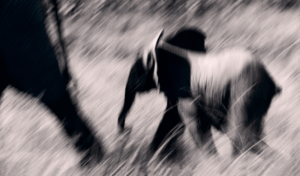That enigmatic term ‘ready at hand’ was a phrase used by Martin Heidegger, the influential 20th Century philosopher, describing the being of tools and other instruments of life. He noted that when we use things we soon cease to notice them as things in themselves but rather in terms of the functionality they offer us. Their ‘being’, their essence is no longer of concern to us – it ‘withdraws’ behind the veil of presence. When we lift up a hammer, to use a famous Heideggerian example, we use it to whack in a nail – we don’t notice its weight or heft. The wood of the handle, or the nature of its head is no longer noticed by us – indeed, they say familiarity breeds contempt. We only notice when the hammer breaks or our kidney’s cease to function – at that moment we catch a glimpse, through its absence, of the inner reality of the thing. And, surely this insight is true of the camera.
The camera is possibly the single most wonderful human invention – in its many forms it has come to dominate our lives. It is ubiquitous whether it’s an xray machine, a digital SLR, or the camera on a phone, and it is ready at hand. We use it but in that use do we notice it? We take notice if the battery runs out or the auto-focus – which has a will of its own – ceases to function. Then we catch a glimpse of its reality – in that moment of fracture we see what it no longer is, in Aristotle’s terms the whole that is more than the sum of its parts, has lost its ‘more than’. ‘More than’, the reality that separates a camera, in all its endless fuctionality, from the components from which it is constructed.
But why does this matter? It matters in this way. Even looking at something as trivial as a hammer or more sophisticated like a modern camera, the reality of the instrument is withdrawn, we are simply concerned with the purpose to which we put whatever is in our hand. This idea that the ‘being’, or the ‘real object’ is wihdrawn is an important idea first proposed by Kant, later developed by Heidegger and now forms the centrepiece of what has become known as Object Oriented Ontology. But what has that to do with cameras specifically. Come on Bob, get to the point.
My point is this: the camera has the power, unique in all human instrumentality, to peak behind the veil of presence and capture the real object, the essence that gives the subject being. Below is an image of a baby elephant caught by my wandering lens. What aspect of this creature’s reality has the camera revealed? That is the question for today.

